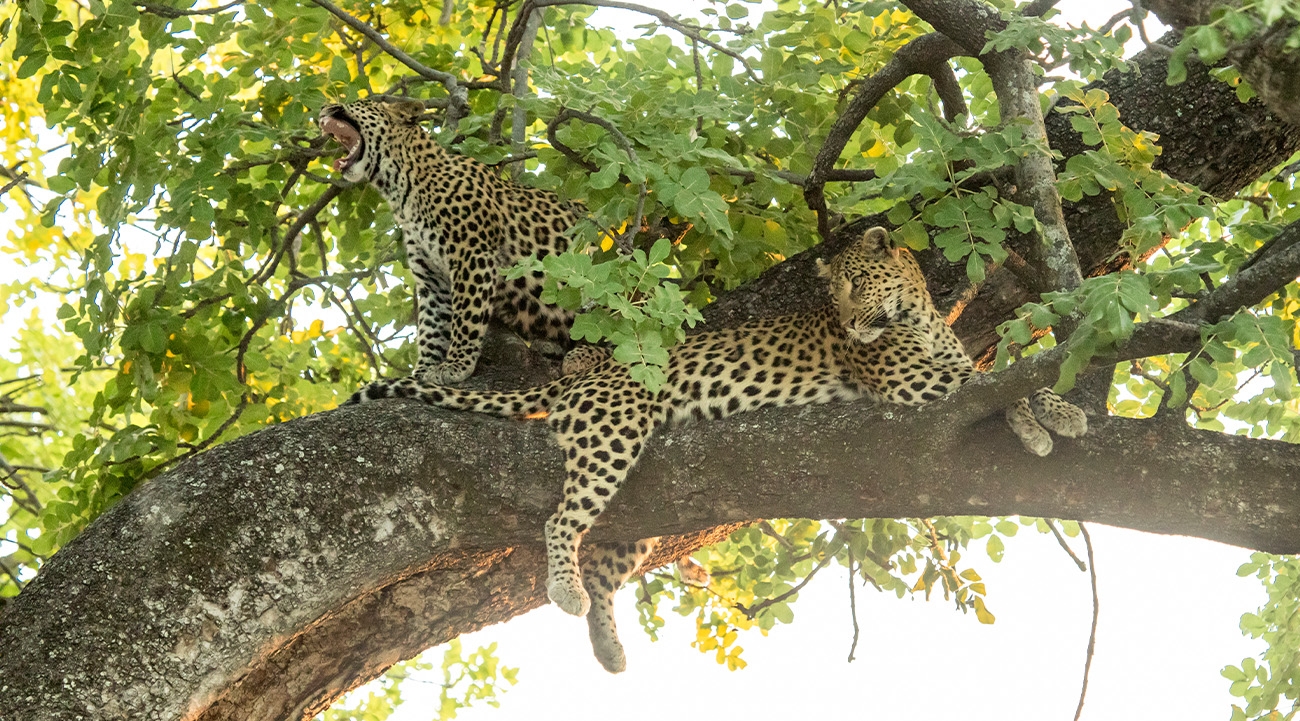Hot spot: What makes Botswana one of the best luxury safari destinations in the world
The leopard sighting came on our third day in Botswana. We had spent hours trawling the vast, ever-changing landscapes of the Okavango Delta, searching amid camouflaged trees and pools of shade on the canopy floor. It was the ultimate game of hide and seek – and the leopard was very good at it.
After a while, my eyes started to deceive me. Was that the striking spots of a big cat lounging high up in a sausage tree, or dappled shade thrown from the mid-morning sun. Sights of swishy-tailed zebras, sleeping hyenas and bateleur eagles drifting over the delta on gentle winds tempered the seemingly never-ending search, but the leopard still proved elusive.
And then the call came. A mother and her year-old male cub draped atop the upper branches of a tree, shielding themselves from the baking-hot sun. We sped across the savannah to see the pair reclining, serene and resplendent, in their majestic spotted coats.
The good luck only continued. Over the next few days, we saw a female leopard stalking a pair of gazelles, using the long grass and the dimming light of dusk to hide her movement. We discovered a male reclining under the shade of a bush, his heavy panting indicating he had recently eaten – and sure enough, later found him gorging on a red lechwe concealed under the branches of a fallen tree.
People had told me wildlife sightings in the semi-arid, landlocked country of Botswana – and, specifically, the geographical wonder that is the Okavango Delta – were epic, and they weren’t wrong. The unique wetland in northwest Botswana, where permanent marshlands meet seasonally flooded plains, is one of the most biodiverse and wildlife-rich regions in the world. The largest inland delta on the planet, its waterways, lagoons and marshland are inhabited by more than 400 species of birds and 350 species of mammals and reptiles – earning it Unesco World Heritage status.
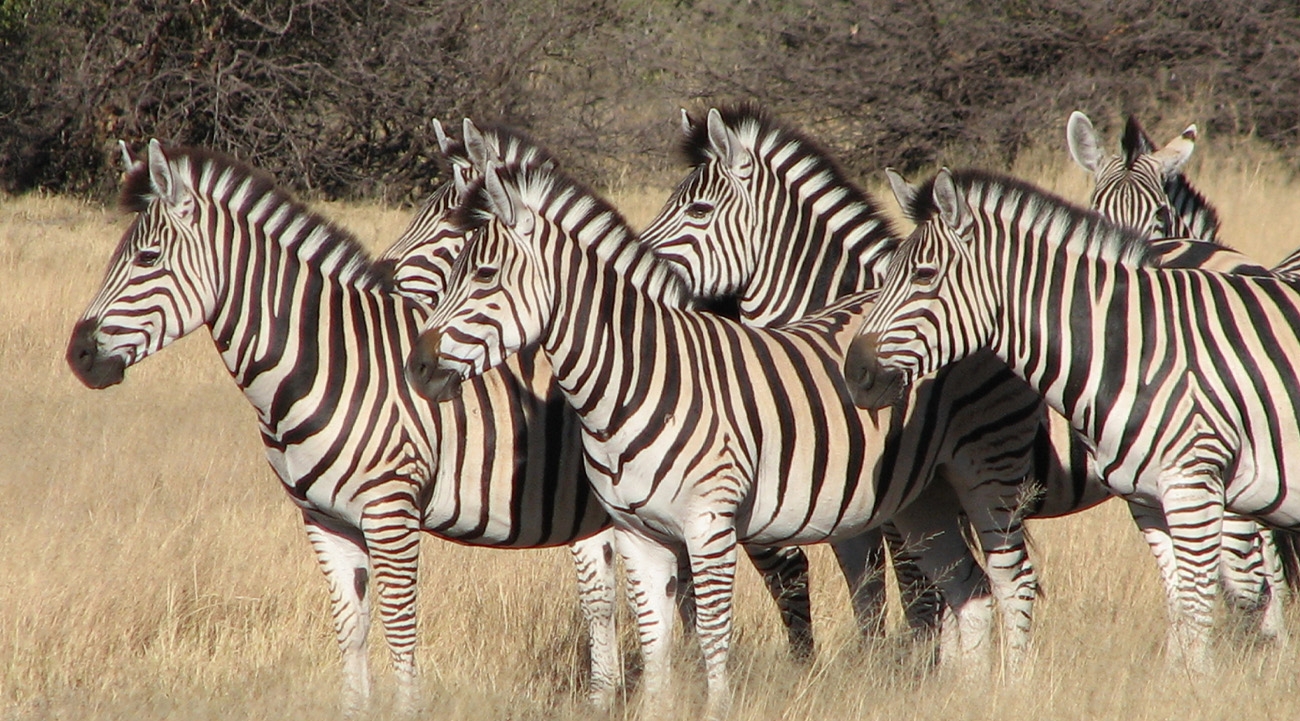

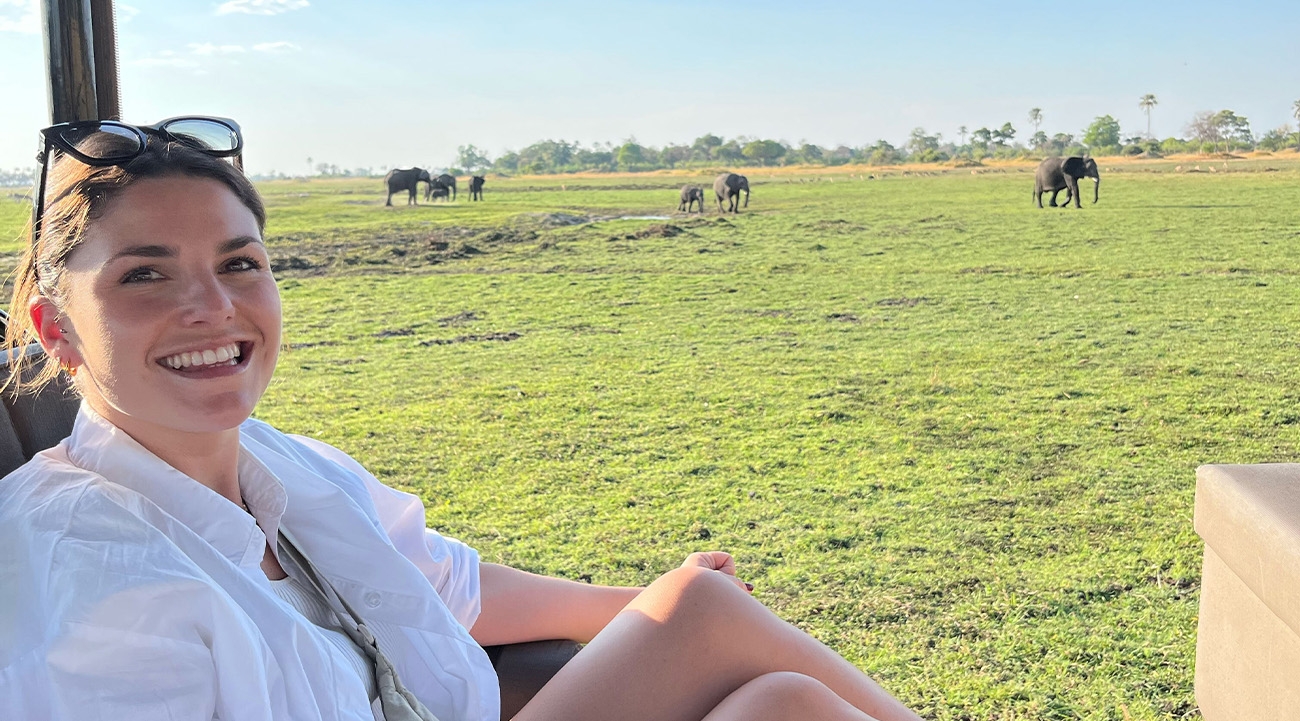
Safari experts
Abercrombie & Kent is an obvious choice when considering the logistically complex nature of a trip to Botswana. The destination has enjoyed steady growth of luxury product in recent years, but A&K and its sister brand Sanctuary Retreats have been a mainstay here for several decades. Best known in Botswana for Sanctuary Chief’s Camp – the stylishly designed tented lodge on Chief’s Island in the Moremi Game Reserve, the central hub of the Okavango Delta – Sanctuary Retreats operates four camps in key locations across the country’s northern region. This, coupled with A&K’s ability to work with a host of additional preferred partners, means the operator is well placed to create a personalised Botswana circuit for clients.
Our journey started in Chobe National Park, nestled on the fringes of the delta, where Sanctuary Chobe Chilwero provides the perfect launchpad for a Botswana adventure. The country’s third-largest reserve, Chobe National Park is characterised by its largest inhabitant: the region is home to the highest concentration of elephants in the world.
The sandy banks of the Chobe River were a hive of activity as we traversed the park at sunset. Cape buffaloes, giraffes and impalas meandered along the waterside; a huge marabou stork paddled in the shallows; and baboons ate from a monkey orange tree. But our best discovery came farther up the river, where a pride of 15 lions was languishing sleepily on the cool sand. We watched them for as long as the sun would allow, before our guide, Bobby, turned his attention to making sundowner gin and tonics. We sipped in silence as the marmalade-hued disc of sun slipped behind the hills, a turtle dove cooing in the distance.
Land of contrasts
The journey from Sanctuary Chobe Chilwero to our second lodge, Sanctuary Baines’ Camp, offered an impressive insight into the vast and varied landscapes of Botswana. On the 75-minute light-aircraft flight from Kasane to Eagle Island, and subsequent 25-minute helicopter ride to Sanctuary’s private airstrip, we passed huge expanses of Kalahari desert, sprawling savannah and bone-dry woodland.
And then there was the delta: fanning out like a Garden of Eden, transforming our view into a watercolour painting of blues and greens. Rich vegetation surrounded deep lagoons and networks of meandering streams; termite mounds created mini islands amid the floodplains. Wildlife flocked and frolicked.
Our guide was leaning against a Land Rover in the shade of a tree as our helicopter landed. He gave us a firm handshake and personalised water bottles, and introduced himself as Professor Ice. “I’m a professor of the delta,” he grinned, “and I was born in June, when there was an unusual frost.” Less than 10 minutes later, Sanctuary Baines’ Camp unfurled like an oasis within a parched grove of trees. From a network of wooden walkways, the camp opened out on to a sparkling lagoon, with a lounge, restaurant and bar offering front-row seats to the view.
Our visit came in late October, at the end of the dry season, when Botswana was waiting – desperately – for the rain to come. A combination of global warming and other natural factors meant the country was having one of its hottest, driest summers on record, and, with the mercury regularly exceeding 40C, the lagoon at Sanctuary Baines’ Camp was dwindling, drawing even more wildlife to its shores. Elephants by the dozen, buffaloes, antelopes and a menagerie of birdlife all coexisted happily. Evening and morning game drives passed by in a blur of excitement and hushed tones.
Our efforts to find the leopard weren’t always fruitful, but we were rewarded in other ways: a huge herd of 500 buffaloes, dust swirling as they moved, and a pride of lions and their sleeping cubs – all swishing tails and giant paws. Wildlife sightings were punctuated by stops for tea and pastries in the morning, and sundowners in the evening. On particularly chilly mornings, hot flasks of coffee would be waiting for us in the truck, and there was always a cold towel on return.
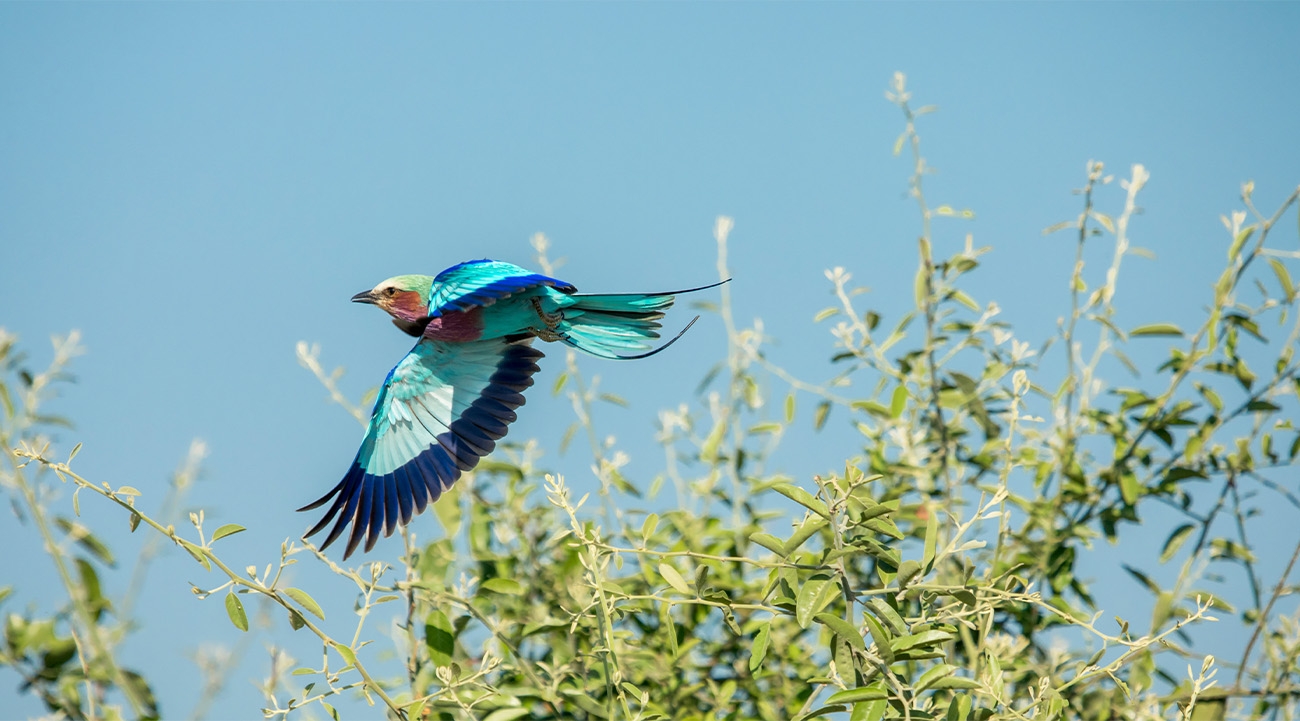
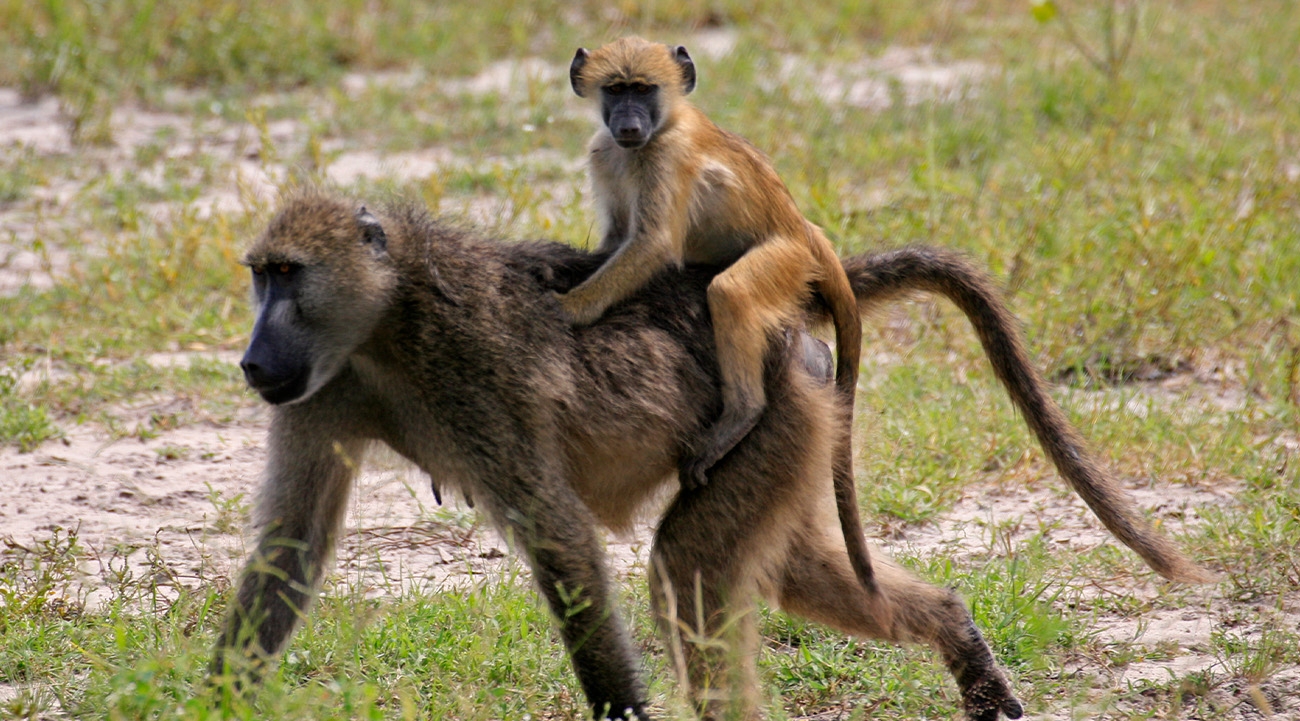

Final sightings
We left Sanctuary Baines’ Camp reluctantly in search of our third and final camp in Botswana: one of the newest properties from Africa specialist Natural Selection, Tuludi, nestled amid the private concession of Khwai Private Reserve.
Like Professor Ice, our guide KK had an impressive knowledge of the delta – identifying the gender of a saddle-billed stork by the colour of its eye – and delivered some excellent sightings. As well as leopards, our eyes were peeled for the critically endangered wild dog – distinctive with their oversized ears and spotted fur – whose existence is threatened by viral diseases such as rabies and distemper, and killings by farmers. The largest remaining population can be found in Botswana – a significant draw for safari-goers.
Two miracles happened on our final day in the delta. First, the rains came: initially in fat, irregular droplets and then a deluge so huge we had to take cover. In a clearing in the grassy savannah, one family was making the most of it. Scampering and splashing about in the rain-dappled puddles were eight wild dog pups, their elders close by, wallowing contently in the cool mud.
There’s a reason Botswana is consistently rated one of the best luxury safari destinations in Africa. Glorious wildlife sightings, unique landscapes, expert guiding and an impressive inventory of high-end product – safari doesn’t get better than this.
Book it: Abercrombie & Kent offers a 10-night Classic Botswana trip from £9,999 per person, based on two people sharing. The price includes flights, transfers, safari accommodation on a full-board basis and guiding.
abercrombiekent.co.uk
Pair it with Zambia
Charlotte Wells, director of product for A&K, explains why agents should consider adding Zambia to Botswana itineraries
“For travellers visiting Botswana, adding a couple of days to explore Victoria Falls and the surrounding area is recommended. Known as Mosi-oa-Tunya or 'the smoke that thunders’, Victoria Falls is one of the most spectacular natural wonders on Earth.
“Extending your trip to see the Zambian side of the falls allows you to fully appreciate their power and grandeur. The views are most dramatic from Knife Edge Bridge. Intrepid visitors can even take a dip in the thrilling Devil’s Pool at the edge of the cascade.
“But there’s more to experience than just the falls. The Zambezi River offers white-water rafting, sunset cruises and canoeing safaris to spot wildlife on the banks. You can also soar over the stunning scenery in a helicopter or on a microlight flight.
“Back on land, Mosi-oa-Tunya National Park offers fantastic game viewing just a short drive from the falls. Expect to see elephants, buffaloes, giraffes and more. And a tour to nearby Livingstone Island even lets you stand in the same spot where Dr David Livingstone first laid eyes on the falls.
“Getting to Livingstone from Botswana is a breeze, with quick direct flights from Kasane making it easy to combine the two destinations. It's the perfect way to cap off an unforgettable Botswana safari.”
